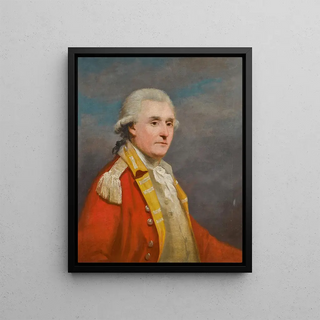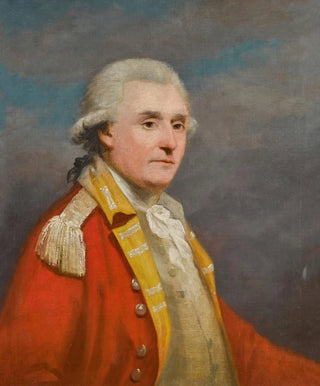Art print | Portrait of a gentleman - George Romney


View from behind

Frame (optional)
In the fascinating world of art, few works manage to capture the essence of an individual with such intensity as George Romney's "Portrait of a gentleman." This canvas, imbued with timeless elegance, invites the viewer to delve into the world of 18th-century Britain, where portrait painting established itself as a privileged means of expression. The piece does not merely depict a man; it tells a story, reveals a personality, and evokes an era where refinement and social status were closely linked to the art of portraiture. Romney's technical mastery, combined with keen sensitivity, makes this portrait an essential masterpiece.
Style and uniqueness of the work
George Romney's style is distinguished by his ability to blend realism and idealization. In the "Portrait of a gentleman," every detail is carefully orchestrated, from the texture of the clothing to the expression on the face. The light, skillfully manipulated, gives the composition a striking depth, while the chosen color palette evokes both richness and sobriety. This art print does not merely depict a man; it reveals his soul, with particular attention paid to traits and posture. The gentleman's gaze, both penetrating and serene, seems to invite the viewer to share a moment of intimacy. This subtle interplay between art and human psychology makes this work a perfect example of Romney's mastery in portrait art.
The artist and his influence
George Romney, an English painter of the 18th century, is often recognized for his significant contribution to portraiture. Trained in a context where art was undergoing rapid change, he established himself as one of the most prominent artists of his time. Influenced by masters like Reynolds and Gainsborough, Romney developed a style that is uniquely his own, combining technical finesse with a psychological approach to his subjects. His work is not limited to simple representation; it explores the nuances of human personality, capturing moments of life with rare intensity. The impact of his work extends far beyond his era, inspiring generations of artists who sought to understand and depict

Matte finish

View from behind

Frame (optional)
In the fascinating world of art, few works manage to capture the essence of an individual with such intensity as George Romney's "Portrait of a gentleman." This canvas, imbued with timeless elegance, invites the viewer to delve into the world of 18th-century Britain, where portrait painting established itself as a privileged means of expression. The piece does not merely depict a man; it tells a story, reveals a personality, and evokes an era where refinement and social status were closely linked to the art of portraiture. Romney's technical mastery, combined with keen sensitivity, makes this portrait an essential masterpiece.
Style and uniqueness of the work
George Romney's style is distinguished by his ability to blend realism and idealization. In the "Portrait of a gentleman," every detail is carefully orchestrated, from the texture of the clothing to the expression on the face. The light, skillfully manipulated, gives the composition a striking depth, while the chosen color palette evokes both richness and sobriety. This art print does not merely depict a man; it reveals his soul, with particular attention paid to traits and posture. The gentleman's gaze, both penetrating and serene, seems to invite the viewer to share a moment of intimacy. This subtle interplay between art and human psychology makes this work a perfect example of Romney's mastery in portrait art.
The artist and his influence
George Romney, an English painter of the 18th century, is often recognized for his significant contribution to portraiture. Trained in a context where art was undergoing rapid change, he established himself as one of the most prominent artists of his time. Influenced by masters like Reynolds and Gainsborough, Romney developed a style that is uniquely his own, combining technical finesse with a psychological approach to his subjects. His work is not limited to simple representation; it explores the nuances of human personality, capturing moments of life with rare intensity. The impact of his work extends far beyond his era, inspiring generations of artists who sought to understand and depict






